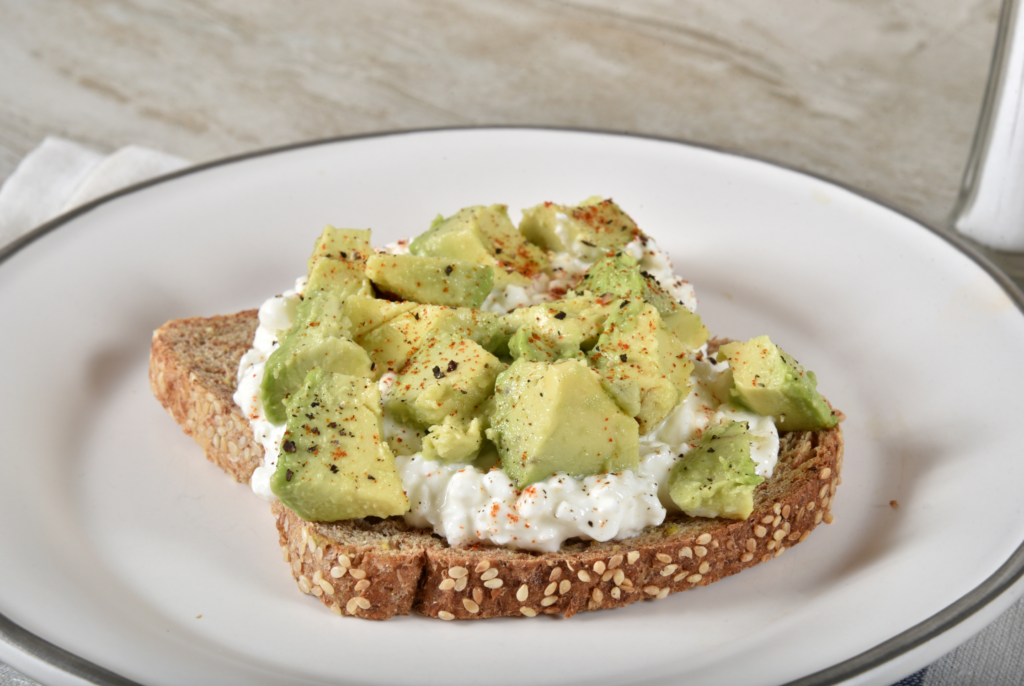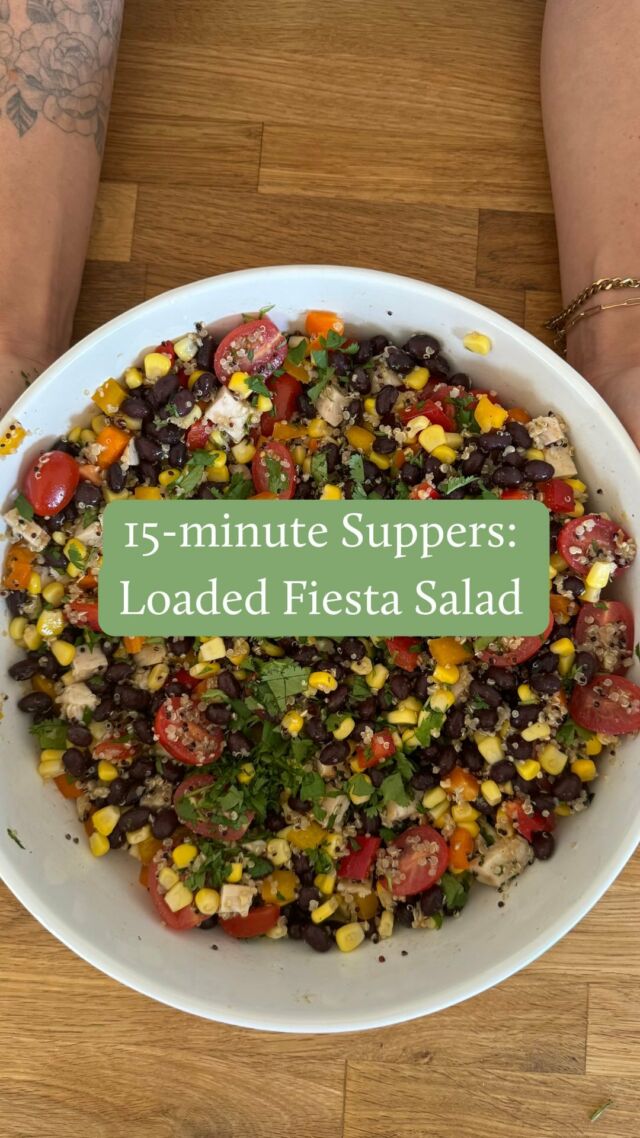Nausea and vomiting are common symptoms experienced during pregnancy. Here is a list of foods that help to fight nausea during pregnancy.

Have you experienced nausea and vomiting in your pregnancy? You’re definitely not alone! Between 70-80% of women report nausea and/or vomiting when pregnant. These symptoms can range from mild nausea to severe nausea and vomiting. The term “morning sickness” does not accurately represent pregnancy nausea and vomiting, as these symptoms can persist throughout the day or may only be felt in the afternoon or evening. Nausea can come in waves, although commonly experienced first thing in the morning, it can pop up at any point during the day! Bummer.
As a pediatric dietitian and mom of 3, I often get questions about how to prevent pregnancy nausea, or what foods to eat to help suppress nausea. In this comprehensive post I explain everything from what causes pregnancy nausea to what foods can help fight nausea during pregnancy!
When does nausea start in pregnancy?
Nausea usually starts 2-4 weeks after you become pregnant. Feelings of nausea typically hit their peak between the 2–4-month of pregnancy. Interestingly, this is also around the time that pregnancy cravings and aversions peak as well. Around 10% of women will continue to feel nauseous for their entire pregnancy, but for most women nausea resolves completely by (or before) the 5th month of pregnancy. Keep in mind that healthy pregnancies may not involve symptoms of nausea whatsoever. Every pregnancy is different!

What causes nausea during pregnancy?
The exact cause of nausea during pregnancy is still unclear, however research suggests that it is likely multifactorial, influenced by a person’s unique genetic, hormonal and gastrointestinal features. Scientifically speaking, the human chorionic gonadotropin (hCG) hormone (the pregnancy hormone that helps thicken the uterine lining to support a growing embryo) is most commonly linked to nausea and vomiting symptoms. This is because the placenta produces more and more of hCG until it peaks at around the 10th week of pregnancy, coinciding with when nausea symptoms are usually at their worst. Although many studies have found a correlation between high hCG levels and nausea symptoms, the jury is still out.
While it is not possible to perfectly predict whether or not you will experience nausea (or vomiting) during pregnancy, there some factors that may put you at higher risk:
- Family history: If your biological grandmother, mother or sister have experienced nausea and vomiting during pregnancy, there is a much higher chance that you also will experience this as well.
- A history of motion sickness: If you are susceptible to feeling sick from the motion of being in a car, boat or other rides, you may be at higher risk.
- Being pregnant with multiples: Being pregnant with more than one fetus is associated with higher hCG levels, which as mentioned above, has been linked to nausea and vomiting of pregnancy.
- Being pregnant with a girl: Many studies have found an association between more nausea and vomiting and a female gender of the fetus. However, this doesn’t mean that feeling nauseous during pregnancy guarantees you are having a girl. I know a few people who were much sicker when pregnant with boys!
- Gut dysmotility: Pregnant women with normal gut motility report less nausea and vomiting symptoms than women who experience faster or slower (or more unstable) gut motility during pregnancy.
Is nausea during pregnancy a good thing?
Oddly enough, nausea during pregnancy may be associated with some favorable outcomes for the baby. Many studies show that mild nausea and vomiting during pregnancy is associated with a lower risk of low birth weight or small for gestational age babies! Pretty interesting hey?
On the other hand, if you are experiencing more severe nausea and vomiting, you are at higher risk of dehydration and problems gaining weight. A small percentage of pregnant women actually experience a condition called hyperemesis gravidarum, which is on the extreme end of the nausea and vomiting spectrum. This condition can lead to complications for both mom and baby if left untreated.

What is hyperemesis gravidarum (HG)?
HG is uncontrollable vomiting during pregnancy, leading to weight loss, dehydration, and possible problems with kidney and liver function. Luckily, with regular prenatal checkups, HG is most often recognized and treated early. Natural remedies that may help to treat typical pregnancy nausea (such eating certain foods, or taking vitamin B6), unfortunately will not resolve symptoms of HG. Most often oral, suppository, or intravenous medications will be required to help reduce the severity of nausea and vomiting.
HG is relatively rare, affecting only 0.3-2% of pregnant women. However, if you are finding that your nausea and vomiting is getting worse, especially in the second and third trimester, do not hesitate to book an appointment with your doctor to discuss further medical treatment options.
10 Foods that fight nausea during pregnancy:
While a lot of foods (and odors) may trigger nausea during pregnancy, there are some foods that are sworn to help fight pregnancy nausea (plus, check out these foods for a healthy pregnancy)! It is important to keep in mind that every pregnancy is different, so while you may find some of these foods work well for you, others foods on the list may miss the mark! Always be sure to ask your doctor or pharmacist before taking any over the counter medications during pregnancy.

Ginger
Ginger tea, candied ginger, or ginger flavored candies are arguably the most common food items used and recommended to help with nausea. When it comes to the research, ginger is a safe herbal remedy to use during pregnancy and it actually does help reduce nausea when compared to a placebo. You can even find Ginger GravolTM liquid gels or chewable lozenges to help with nausea!

Peppermint tea
Similar to ginger, peppermint is a safe to use during pregnancy for stomach upset or nausea in the form of tea or peppermint flavored candies. Even the fresh sensation of chewing peppermint flavored gum can help reduce nausea for some.
Dry toast/crackers/dry cereal
Bland, relatively odorless foods in general help to reduce triggering nausea. It is often recommended to have crackers ready on your bed side table so that you eat something before getting out of bed the morning. Nausea tends to be at its worst when blood sugars are lower after a long period of not eating (like an overnight fast).

Protein containing foods: almonds, peanut butter, cottage cheese
Protein foods take longer for the body to digest, helping to support a more even and sustained blood sugar level throughout the day. Like mentioned above, dips in blood sugars can trigger nausea, especially during pregnancy! It can be very effective to add small amounts of protein throughout the day to help prevent those bigger dips in blood sugar. I have listed the most common proteins that don’t typically trigger nausea during pregnancy, however any protein food that you can tolerate (including meat, fish, nuts/seeds, beans, legumes, tofu etc.) will be helpful in regulating blood sugars to lower your risk of feeling nauseous.
Sour foods: Lemon water, citrus fruits, sour candies
Sour tasting foods like lemon, citrus, or sour flavored candies have been reported to help relieve nausea in pregnant women. Personally, I found that sipping on lemonade or cranberry juice diluted with water sometimes helped keep my nausea at bay during pregnancy. It was more palatable than drinking plain water, and helped me to stay hydrated.
Broth
Chicken, beef or vegetable broth is a great option to have on hand if you are nauseous. Broth has a comforting light taste, and has hydrating qualities helping to replace lost fluid and electrolytes from vomiting.

Cold crunchy foods: Watermelon, cucumber, apples
Cold, crunchy fruits and vegetables can feel refreshing to eat, especially when your nausea is triggered by more pungent, cooked foods. Foods that are high in water content like watermelon and cucumber help to keep your body hydrated and regulate your bowels during times of nausea and lower appetite.
Smoothies
When you are feeling nauseous, (I can tell you from experience) the last thing you want to do is cook meals for yourself! A great option is a cold smoothie made with frozen fruit, nut butter (optional) and milk to help fuel your body without triggering nausea. Slowly sipping on a cold smoothie will help settle your stomach while raising your blood sugar levels to help stave off nausea symptoms.
Rice
Plain rice, rice pudding, or rice in a plain broth are all options that may help fight your pregnancy nausea. Rice is a bland food that gives off little to no odor, which is ideal when you are feeling nauseous.
Banana
Bananas are a great source of energy, vitamins and minerals. This fruit is easy to peel and eat with little to no preparation, which is always a plus when you are feeling nauseous. Bananas provide soluble fibre which help regulate your bowels and even out blood sugar levels. Gut dysmotility (like previously mentioned) can contribute to nausea during pregnancy. Bananas are also rich in potassium, an essential electrolyte that needs replacement, especially if you are experiencing nausea and vomiting.
The types of foods you choose to have on hand during the nauseous times of pregnancy, certainly can have an impact on the intensity and duration of your nausea. However, it doesn’t stop there! I have more tips that I recommend you give a try, especially if you are finding you need more support in coping with your nausea.

More tips to cope with pregnancy nausea
- Eat frequent small meals (every 2 hours as tolerated) to prevent blood sugars from dropping. Tip: Keep crackers or dry cereal next to your bed to eat before getting up in the morning to help stave off the onset of morning sickness.
- Keep your mouth clean and fresh tasting, lingering unpleasant tastes in the mouth can trigger nausea
- Sit up for a while after eating to allow food and fluid to empty from your stomach before lying down. This can help prevent heartburn and feelings of overfullness which are known to trigger nausea
- Get help with food preparation, especially when preparing pungent foods such as cooked proteins or sauces that might be a trigger for your nausea
- Sip fluids slowly throughout the day to stay hydrated. Try adding in lemon wedges to your water, or a bit of lemonade or cranberry juice. Sour flavors help reduce nausea.
- Avoid fizzy drinks. Carbonation can cause bloating and discomfort which may make nausea worse
- Try to limit the volume of greasy or fried foods eaten in one sitting. Foods high in fat can slow gastric emptying and lead to feeling bloated or cause heart burn, especially when you have a growing baby pushing up on your stomach
FAQ
Most studies on ginger and pregnancy nausea find that ginger does help to reduce nausea when compared to a placebo. Peppermint tea may also help to settle an upset stomach and is also safe to drink during pregnancy. While ginger can be taken in tablets or capsules, it is not recommended to take other herbal supplements in capsule form during pregnancy as they may have potential negative side effects. Always ask your doctor or pharmacist before taking any new medications or supplements during pregnancy to ensure safety and efficiency.
It is possible that the high level of iron in prenatal supplements can make your nausea worse. If this is the case for you, instead of stopping your prenatal multivitamin, try to avoid taking it on an empty stomach. Another strategy is to take it before bed. If you find you are unable to tolerate your supplement, you can ask your health care provider about prenatal supplements that have lower levels of iron which will be less likely to trigger nausea. Another option is to take folic acid supplement containing 0.4-1.0mg of folate by itself daily, until you are feeling better and ready to restart your prenatal supplement.
Actually yes! Pyridoxine or vitamin B6 supplementation is sometimes recommended before starting other medications, to help treat nausea during pregnancy. The need for vitamin B6 is increased during pregnancy and is important for energy metabolism, as well as your babies brain development. Research also shows that its supplementation is often effective in reducing symptoms of nausea and vomiting during pregnancy! Pretty cool hey?
First of all, it is important to know that if your diet has been restricted because of nausea and you have been unable to eat a variety of foods for a few weeks, try not to panic! This will not cause harm to your baby. The most important thing is to try your best to stay hydrated during this time. Focus on eating foods that appeal to you in moments when you have more of an appetite. For most women, pregnancy nausea starts to get better after the 3rd or 4th month of pregnancy.
It is a good idea to book in with your prenatal doctor if your nausea and vomiting lingers around or continues to get worse, and you are having trouble gaining weight, or are experiencing weight loss. Do not hesitate to book in with a prenatal dietitian as well. Your doctor will provide you with treatment options to help manage your nausea. The first line of treatment is usually oral pyridoxine (vitamin B6 supplement) combined with doxylamine succinate (an antihistamine) to treat nausea and vomiting of pregnancy. In Canada this medication is called Diclectin®.
Staying hydrated is the most important thing to prioritize when you are having a hard time keeping food down during pregnancy. You can start by sipping on hydrating soups that are less likely to upset your stomach include clear broth soups like chicken noodle soup, or plain vegetable soup. You may want to avoid soups that are spicy or creamy as they can trigger heart burn, and nausea. Other hydrating foods that are less likely to cause nausea include fruits, fruit smoothies, and crunchy cold cucumbers. Try nibbling on crackers or toast with thinly spread nut butter if you are feeling like you can keep down something more substantial. Remember to take it slow, chew well to help with digestion, and avoid eating too much in one sitting (overfilling your stomach can make it angry!). If you are having a hard time eating anything solid, first try clear broth, diluted juice (like apple or cranberry juice) or small sips of oral rehydration solution. Pedialyte freezer pops saved me when my pregnancy nausea and vomiting was at its peak!
Conclusion
Pregnancy nausea and vomiting can take a heavy toll on one’s mental and physical health, and can interfere with responsibilities at home and relationships at work. A woman experiencing these symptoms can have significant disruption to her quality of life. If your loved one is struggling with nausea during pregnancy, please offer support to her in any way possible, from offering childcare, delivering a cooked meal or baked goods, to bringing over a load of groceries. This common pregnancy disorder can be quite debilitating. If you are struggling with pregnancy nausea, I am hopeful the above tips can make this time a little more bearable! If you feel your symptoms have become debilitating, do not hesitate to talk to your doctor about pregnancy safe pharmaceutical options to treat your nausea and vomiting.
References:
- Bustos M, Venkataramanan R, Caritis S. Nausea and vomiting of pregnancy – What’s new? Auton Neurosci. 2017 Jan;202:62-72. doi: 10.1016/j.autneu.2016.05.002. Epub 2016 May 13. PMID: 27209471; PMCID: PMC5107351.
- Tan PC, Kartik B, Thanendran P, Zakaria R, Win ST, Omar SZ. Taste, smell and food-related nausea and vomiting responses in hyperemesis gravidarum: A case-controlled study. Sci Rep. 2020 Mar 10;10(1):4445. doi: 10.1038/s41598-020-61114-y. PMID: 32157169; PMCID: PMC7064589.
- Morning Sickness: Nausea and Vomiting of Pregnancy | ACOG
- Metabolic emergencies in pregnancy | RCP Journals
- Herbal Therapies in Pregnancy: what works? Thomson (unimore.it)
- Keeping Your Baby Healthy During Pregnancy – Unlock Food









Leave a Comment